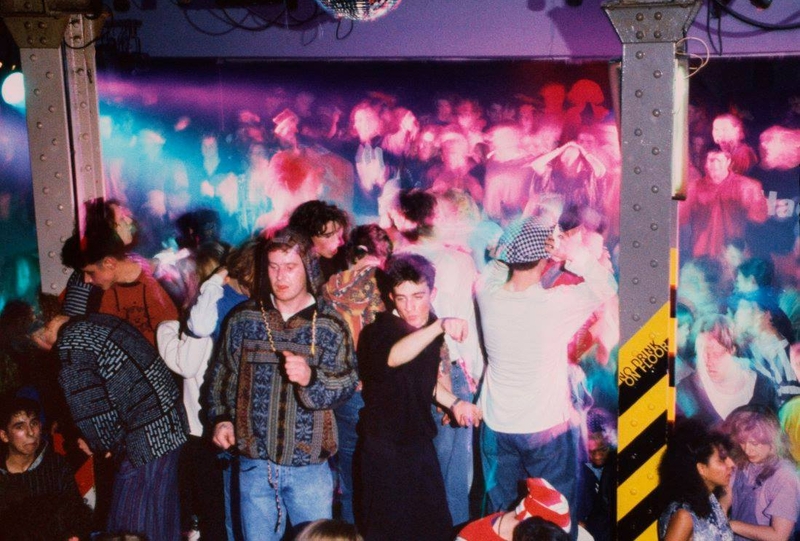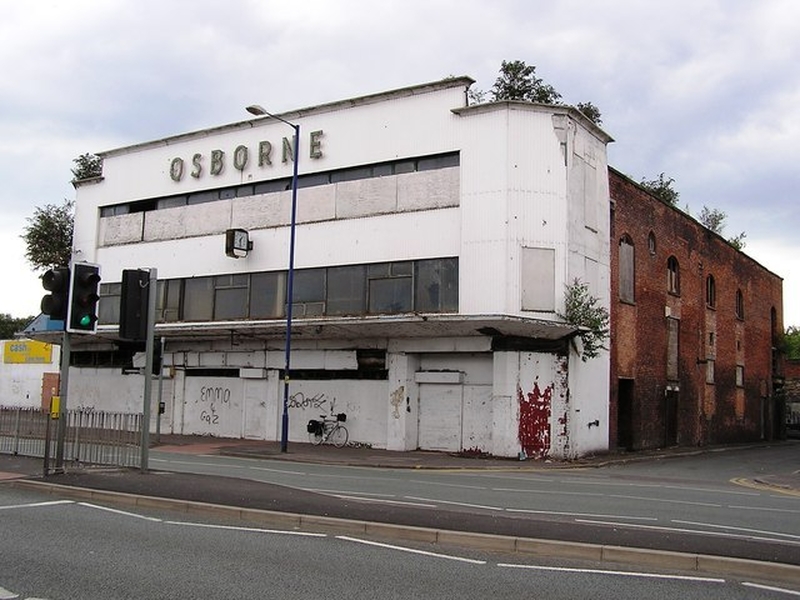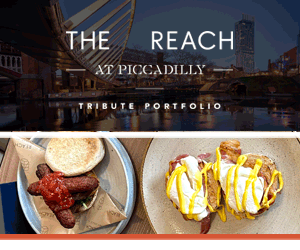From the Haçienda to the Thunderdome: clubbers who raved between 1985 and 1995 are being invited to share their (often, er, colourful) tales
Ask anyone about Manchester nightlife and you’ll no doubt hear about the Haçienda. Over twenty years after its closure, the club's hedonistic heyday is still recognised as one of the most pivotal moments in the UK's music and nightlife scene.
But while the Haçienda is recognised as the epicentre of the Madchester movement, it wasn't the only Greater Manchester club helping to forge the city's dance music reputation.
Hulme’s squat/club/after party venue The Kitchen, Middleton’s Hippodrome and Oldham Road’s Thunderdome all had their part to play, and now some of the seldom-told, partially foggy stories of the ravers who frequented those clubs are being collected and shared for future generations to enjoy.
From dancing on cars to sweat-drenched ceilings to illusive encounters with local drug lords...
Manchester Digital Music Archive (MDMArchive - very clever) and Manchester Metropolitan University are gathering together stories from the Madchester era for the digital Lapsed Clubber Project. Anyone who partied on the 80s-90s club scene (and can remember anything about it) is being invited to leave their memories online with digital voice recordings and written accounts.
Leading names of the era including Graham Massey of 808 State, DJs Jay Wearden, Kath McDermott and Suddi Raval, have already left their spoken memories of time spent in some of the better known and some of the most obscure clubs - most of which have been demolished and replaced, invariably with apartment blocks as the city region continues its transformation.
From dancing on cars to sweat-drenched ceilings and illusive encounters with local drug lords, memory leavers have shared the highs and the lows of the Manchester club scene from 1985 to 1995.

The Lapsed Clubber project is a continuation of Manchester Metropolitan academic Dr Beate Peter’s previous work, which documented the stories of Madchester ravers in a photographic exhibition. However, the digital audio map hopes to offer a solution to the lack of testimonies coming directly from the dance floor to offer a more rounded account of Manchester’s rave history.
“We want the original rave community of Greater Manchester to tell the real stories,” explains Dr Beate Peter. “It's about revealing the hidden musical and social histories of ordinary people, rather [than] re-treading the same old clichés of Manchester music.
"It’s a chance to write history in a different and engaging way, and also to discover the hidden stories of Manchester’s rave culture as told by the people who were there. By asking a few well-known heads to gives us some of their memories first, we hope people feel inspired to contribute.
"It’s a great project and we've already had loads of fun working with people from all walks of life, and hearing people’s tales.”
The Kitchen was the real reason to go out, not the Haçienda...
Away from the famed stories of Factory and the Haçienda, evocative memories of smaller, but no less influential, clubs and club nights show just how vibrant the scene became. For those who were too young to party at the time, just some of the venues remembered by the Lapsed Clubber Project include: The Thunderdome, Oldham Road’s club that catered to a more edgy crowd alongside the city’s gangs and football firms; International 2, a renowned venue for gigs throughout the 80s and 90s set in the heart of Manchester’s University area at Plymouth Grove; and The Kitchen, home to a lively social scene beyond the interests of GM police in the modernists crescents of Hulme.
Stories document wacky fashion, drugs, dancing and danger – all from Manchester’s array of nearly-forgotten nightlife venues.

Graham Massey of 808 State, shared his experience of The Thunderdome: “We took Trevor Horn down [to the Thunderdome] on a Saturday night. There was not one, but two police helicopters rotating around the Thunderdome. [Trevor] seemed really fascinated by the fact that everyone seemed to have made their own clothes and had these bowl haircuts. It looked like everyone had run up their clothes on their mother’s sewing machine. It was a definite fashion thing at Thunderdome…that baggy thing had gone a little bit too far! The flares had gone a little bit too wide! And he was absolutely horrified by the place, being someone who comes from... Notting Hill!”
Paul Pryce (submitted to MDMArchive): "The Kitchen was the club that really launched the Manchester late night scene, it took place in two flats knocked into one, on the top floor of the block behind the old Russell club. The Kitchen was the real reason to go out, not the Haçienda (that was the warm up), open from 2am until the drugs wore off with resident DJs the JAM MCs."
I owned a rubber dress – I have no idea why
Anonymous: “I went to the opening of Flesh [at The Haçienda] and I do remember me and my mate spending ages on what to wear. I owned a rubber dress – I have no idea why. And then my friend was like ‘I can’t be outdone by you’ and so, the only thing he had was a pair of thigh-length waders. So, he wore a pair of budgie smugglers, the thigh-length waders and he borrowed a suspender belt off me. It wasn’t even a warm part of the year.”
[Anonymous – re The Haçienda]: “The door manager at the Haçienda was famous for making people queue outside for ages and ages and ages in the freezing cold outside when there would literally be no one inside, because that was all part of the hype.”
Document your memories of club nights in Manchester online at the Lapsed Clubber Audio Map - The Lapsed Clubber Project is a Heritage Lottery Funded Project based at Manchester Metropolitan University and run by Dr Beate Peter in partnership with Manchester Digital Music Archive.














